|
Dear Family, Valuable Friends, Clients, and Colleagues:
From my home to yours, I wish you rich blessings into the New Year. Here is a special article I created about the history of Watch Night Service in the African American community. The tradition predated the importance of the famous 1862 Watch Night Services and originated with the Moravians in Germany many years earlier. The first Methodist church in America to celebrate Watch Night in the 1700s was St. George United Methodist Church in Philadelphia, the home church of Bishop Richard Allen, co-founder of the African Methodist Episcopal Church. However, it has become particularly important in the Black Church, with its evolution in the early to mid-1800s. The word evolved from “Freedom’s Eve” to “Watch Night” as the freed and enslaved blacks “watched” the clock strike 12 midnight, turning the course of the Civil War and freeing three million slaves in the states of the rebellion. Wishing You The Best in 2019! Carole Copeland Thomas, MBA CDMP, CITM --------------------------- The History Of Watch Night Services In The Black Church by Carole Copeland Thomas With the festivities of Christmas, Hanukkah, and Kwanzaa now on full display, there is still time to reflect on the ritual of my ancestors and many other African Americans, whose forefathers sat around campfires and wood stoves in the twilight of December 31, 1862. There they sang spirituals acapella, prayed, and thanked the Good Lord for what was about to happen the next day. In the North, Abolitionists were jubilant that the “peculiar institution” was finally about to get dismantled one plantation at a time. The booklet, Walking Tours of Civil War Boston sites this about this historic event: “On January 1, 1863, large anti-slavery crowds gathered at Boston’s Music Hall and Tremont Temple to await word that President Abraham Lincoln had issued the much-anticipated Emancipation Proclamation (EP). Those present at the Music Hall included Uncle Tom’s Cabin author Harriet Beecher Stowe, poets Henry Wadsworth Longfellow and John Greenleaf Whittier and essayist, poet and physician Oliver Wendell Holmes, Sr. Also present was Ralph Waldo Emerson, who composed his Boston Hymn to mark the occasion.” Now… Let’s Look Back...156 Years Ago Tonight... It was on January 1, 1863, amidst the cannon fire, gunshots, and burnings at the height of the Civil War that President Abraham Lincoln sealed his own fate and signed theEmancipation Proclamation. It begins with the following decree: Whereas on the 22nd day of September, A.D. 1862, a proclamation was issued by the President of the United States, containing, among other things, the following, towit: "That on the first day of January, in the year of our Lord one thousand eight hundred and sixty-three, all persons held as slaves within any State or designated part of a State, the people whereof shall then be in rebellion against the United States, shall be then, thenceforward, and forever free; and the Executive Government of the United States, including the military and naval authority thereof, will recognize and maintain the freedom of such persons, and will do no act or acts to repress such persons, or any of them, in any efforts they may make for their actual freedom.” That the Executive will, on the first day of January aforesaid, by proclamation, designate the States and parts of States, if any, in which the people thereof, respectively, shall then be in rebellion against the United States; and the fact that any State, or the people thereof, shall on that day be, in good faith, represented in the Congress of the United States by members chosen thereto at elections wherein a majority of the qualified voters of such State shall have participated, shall, in the absence of strong countervailing testimony, be deemed conclusive evidence that such State, and the people thereof, are not then in rebellion against the United States." CAROLE' S TRANSLATION: Effective January 1, 1863, all slaves in the states in rebellion against the Union are free. Technically that is all that President Lincoln could do at the time. He used his wartime powers as Commander in Chief to liberate the "property" of the states in rebellion of the Union. The act did not free the slaves of the Union or border states (Delaware, Maryland, Kentucky, Missouri, or West Virginia) or any southern state under Union control (like parts of Virginia). It would take the 13th Amendment (that freed all slaves in 1865), the Union Army winning the Civil War (April 9, 1865), and the assassination of President Lincoln (shot on April 14th and died on April 15, 1865) for all of the slaves to be freed. That included the liberation of the slaves in rebellious Texas on June 19, 1865 (Juneteenth Day) and finally the ratification of the 13th Amendment on December 18, 1865, giving all black people freedom and permanently abolishing slavery in the US. So in 1862 on the eve of this great era, the slaves "watched", prayed, and waited. My ancestors, including Bishop Wesley John Gaines of the African Methodist Episcopal Church (AME) (a slave in Georgia freed by the EP) and the other three million slaves prayed for divine guidance and an empowered Abraham Lincoln to do the right thing. It is as important today as the tradition of black people eating black-eyed peas on New Year's Day for good luck. Following the Emancipation Proclamation slaves were freed in stages, based on where they lived, the willingness of the plantation owner to release them and when Union troops began to control their area. Black educator and community activist Booker T. Washington as a boy of 9 in Virginia, remembered the day in early 1865: “As the great day drew nearer, there was more singing in the slave quarters than usual. It was bolder, had more ring, and lasted later into the night. Most of the verses of the plantation songs had some reference to freedom. ... Some man who seemed to be a stranger (a United States officer, I presume) made a little speech and then read a rather long paper—the Emancipation Proclamation, I think. After the reading, we were told that we were all free, and could go when and where we pleased. My mother, who was standing by my side, leaned over and kissed her children, while tears of joy ran down her cheeks. She explained to us what it all meant, that this was the day for which she had been so long praying, but fearing that she would never live to see.” The longest holdouts were the slaves in Texas, who were not freed until June 19, 1865, two months after the Civil War ended. That day is now celebrated as Juneteenth Day around the United States. That is the history of Watch Night in the African American culture. May you and your family enjoy a spirit-filled New Year throughout 2019. Thank you for ALL of your support you have given to me and my business throughout 2018. -Carole
0 Comments
Conservative Blogger Erick Erickson America is such a large country that it’s relatively easy for some populations to hide out with “their own kind.” Our media is so segmented that information can be brought to you by your favorite cable network, blogger or politically affiliated news organization with virtually no connection to the other side. You don’t have to understand the other side because you don’t have to spend anytime reaching out to them. Unless you’re willing and able to suspend your own judgment and walk a mile in “their shoes.”
Because I live a transparent life and practice diversity wherever I can, I subscribe to conservative bloggers and opinion makers. One of them is Erick Erickson, a moderate conservative who has written a remarkable commentary on understanding how everyday life activities impacts Blacks and Hispanics. He starts out by saying, “I am writing here about something I know nothing about and, given the demographics of this website, most of you know nothing about. I have witnessed it, but I have not experienced it.” The article details the acquittal of the police officer to shot and killed Philando Castile in an incident all caught on video. Read the article and share it with your friends and colleagues. The opening paragraph alone is worth a discussion with your staff over a brown bag lunch. How often do we judge “those people” without ever getting a sense of how they are treated is the essence of Erick’s commentary. Then, think about subscribing to a blog, newsletter, or media outlet that has opposing views to your world. Learning first hand how the other side thinks is the first step in diversity and cross-cultural understanding. Top Left: Boston Red Sox Award Top Right: Adam Jones Bottom: Awardees Harvard Law School Professor Charles Ogletree & Carole Copeland Thomas 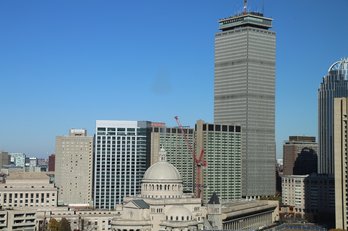 Full disclosure. As a native Detroiter who has lived in the Boston area for more than 35 years, I cringe when I hear stories about racism in my adopted city. As a diversity speaker and trainer for 30 years, the pain of these stories runs deep. For nearly a week, I have read the newspaper reports about a stupid local fan who yelled out the “n-word" during last week’s Boston Red Sox - Baltimore Orioles game at Fenway Park. The victim, Orioles center fielder Adam Jones, tempered his anger, even after the same fan or another one threw a bag of peanuts at him, missed and hit a police officer. The incident threw Boston back in the news as a city that can’t ditch racism no matter how hard it tries. It's now become a national news story that forces us to remember that The Red Sox were the last team to recruit a black player in the major leagues. Its owner at that time, Tom Yawkey, had no use for black people, including rising baseball stars like Jackie Robinson and Willie Mays. That history was buried when the new owner, John Henry II, took a very pro-active stand to make his team more diverse and inclusive. Other players have also been called the “n-word” at Fenway, which makes it even worse. Those are the facts. Lingering racism remains with the diehards who just can’t accept the realities of a changing city and nation where multiculturalism is a mainstream choice for most. Clearly, city and state elected officials have beaten the drums about making our region more inclusive. Boston’s Mayor Martin J. Walsh and Governor Charlie Baker immediately condemned the ballpark incident as intolerable, socially and morally unacceptable. The Red Sox team president, Sam Kennedy, stated, “I find it despicable. There’s no place for it.” And so go similar comments uttered in board rooms and community centers. Boston is NOT a city of hate. Boston rejects racism of any kind. The fans made that point very clearly during the ballgame between the rival teams the next day. They gave Adam Jones a prolonged standing ovation to show their support for him despite the previous night’s ruckus. There’s another side to consider when you look at what happened at Fenway Park. Boston HAS changed. I should know as a 35 year resident of the region. Many factors have led to the transformation of Boston. Both governmental and private initiatives have worked diligently to mute the angry and hateful voices of the past. Take, for example, the efforts of the Greater Boston Convention and Visitors Bureau (GBCVB). They created a Multicultural Committee, designed to transform the image of Boston (www.crossculturalboston.com). The first committee was launched in the early 1990s as the city geared up for some high-profile national minority conventions scheduled to come to the city. One of them held in 1995 was the national conference of the National Black MBA Association. I served on the Multicultural Committee and as the local chair of that event that hosted over 5000 black professionals from around the United States and beyond. The efforts of the Multicultural Committee combined with support from corporate leaders and then-Mayor Thomas Menino led to one of the most successful conventions in the association’s history. The Multicultural Committee took a hiatus for a few years in the late 1990s and relaunched in 2003 under GBCVB President & CEO Pat Moscaritolo. He appointed me as the committee chair, and we have been rocking and rolling ever since. Our committee of nearly 15 ethnically diverse business owners, hospitality leaders, and GBCVB staff meet every month except for July and August. We commit to serving in this volunteer role because we care about the image and reputation of our city. The committee formulates ways that we can support the Bureau’s efforts to attract conventions of color. We attend various functions and serve as a welcoming body when executive boards and association leaders come to town. Our enthusiasm mounted in 2014 when both the National Association of Black Journalists and The Eastern Regional Conference of Delta Sigma Theta, Inc. hosted their meetings just weeks apart. Both groups left Boston with renewed levels of confidence that the city was embracing diversity and inclusion in powerful new ways. Other conferences, including The National Council of La Raza, The Asian American Journalists Association, Blacks in Government and The Urban League have all had national meetings in Boston, with much success. One of my finest moments was a sunny afternoon in August 2016 when the Boston Red Sox and the Boston Church League honored me and several other civic, social justice and business leaders on the playing field at Fenway Park. We stood on that bright green turf, heard our names announced over the PA system and received the cheers from thousands of fans across the ballpark. No-one shouted the “n-word.” No-one threw bags of peanuts at us. No-one audibly disrespected us. Our families and friends cheered with the crowd in support of our achievements. It was a shining moment for all of Boston and us. As a diversity trainer and speaker, I choose to look at the glass half filled. The days of forced busing in South Boston are long gone. The confrontations and racial divisiveness of the past have been replaced by a city that is now a progressive international destination that welcomes the world. We condemn the actions of ignorant fans who can’t let go of their racism. They have been ejected from Fenway Park and shouldn’t be accepted anywhere else. They do exist, and I grudgingly acknowledge their existence. But they do NOT represent the life blood of a city that’s turning the corner and closing the chapter of its racial past, never worth reliving. Bostonians are resilient as evident during the 2013 Marathon bombing. And Bostonians rose up last week, delivered a standing ovation, and told Adam Jones and the rest of the world that it’s a city too big to hate and too proud to let the actions of a few stand in the way of progress. =================== As an award-winning speaker, trainer and global thought leader, since 1987, Carole Copeland Thomas moderates the discussions of critical issues affecting the marketplace. She has her pulse on the issues affecting working professionals and regularly consults with industry leaders. She has spent 30 years cultivating relationships and partnerships with local, national and international sponsors, including Walmart, Amtrak and Emirates Airlines. Carole has worked with clients throughout the United States and seven foreign countries. Carole is the past president of The National Speakers Association -New England Chapter and is on the board of the Greater Boston Convention & Visitors Bureau. Carole is a blogger and social media enthusiast using various technology platforms to enhance her business development activities. Carole has been featured in the New York Times, Boston Globe, Black Enterprise, ABC Radio and CBS News. She is the author of four books and is the Past National Vice Chair of the National Black MBA Association www.carolecopelandthomas.com www.crossculturalboston.com Greater Boston Convention & Visitors Bureau Multicultural CommitteeMembers of the GBCVB Multicultural Committee. Standing Left to Right: Turner Skenderian, Dr. ErinnTucker, Tiffany Probasco, Darrell LeMar, Ola Akinawuni Seated Left to Right: Suzanne Grogan, Carole Copeland Thomas, Michael Munn, Donna DuPee, Kelley Chunn
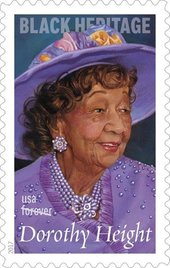 Dr. Dorothy Height was always a woman of action. I am so glad that I had the honor of meeting her on several occasions in Washington, DC. Quiet, action-oriented with grace and elegance. She lived through 17 US Presidents and knew/met 12 of them. One of the early leaders of the National Council of Negro Women, Dr. Height was an pioneer of equality for all people and opportunities to empower women of color across the globe. I took the photo above (with the gold hat) of Dr. Dorothy Height on March 1, 2009, the year before she died. Now she has her own US stamp in her honor that just came in in celebration of Black History Month. I hope that you will honor and buy several sheets of her stamps at your local post office. Here's her Bio: Dr. Dorothy Height was the National President of the National Council of Negro Women AND the National President of my sorority, Delta Sigma Theta Sorority, Inc. She was also on the stage with Dr. Martin Luther King, Jr. during the 1963 March on Washington and lived long enough to meet and congratulate America’s first black president, Barack Obama. A tireless activist, Dorothy Height (1912–2010) dedicated her life to fighting for racial and gender equality. Although rarely gaining the recognition granted her male contemporaries, she became one of the most influential civil rights leaders of the 20th century. Height received the nation’s two highest civilian honors for her work, the Medal of Freedom and the Congressional Gold Medal. In 2003 I stood in a long line to have her autobiography, Open Wide The Freedom Gates, signed by her. It was a proud moment for me. One of my favorite quotes by Dr. Height states, “Greatness is not measured by what a man or woman accomplishes, but by the opposition, he or she has overcome to reach his goals.” Such an apropos quote for our present political climate here in America. Dr. Height was a “fashionista!” You never saw her without her signature hats to accompany her stylish outfits. She lived during a time when the men often received the accolades. Yet, she has had the last laugh now that her smiling face is on the US stamp. It was always a great privilege to see her escorted on stage during our Delta Legislative Conference in Washington (Delta Days In The Nations Capital). Her presence was an assuring factor that Delta women like Dr. Height were always focused on public service and social action. I so admire Dr. Height and other women like her. The women featured in the new movie “Hidden Figures” remind me of Dr. Height. Stately. Trained. Talented. Working for the good of humanity. Dr. Height was aware of the diversity yet unborn in this country. She remained civically engaged her entire life. Physical illness was the only force that closed the last chapter of her long life. She remained mentally sharp to the end. As we continue to reflect on the those who have contributed to Black History Month, let’s pause and give thanks to a woman whose sacrifice and integrity made our nation and our world a better place to live. Dr. Dorothy Height. Just another reminder that... Black History IS American History. Watch Carole's Commentary On Watch Night Below...Dear Family, Valuable Friends, Clients, and Colleagues:
From my home to yours, I wish you rich blessings into the New Year. Here is a special article I created about the history of Watch Night Service in the African American community. The tradition predates the importance of the famous 1862 Watch Night Services and originated with the Moravians in Germany many years earlier. The first Methodist church in America to celebrate Watch Night in the 1700s was St. George United Methodist Church in Philadelphia, the home church of Bishop Richard Allen, co-founder of the African Methodist Episcopal Church. However, it has become particularly important in the Black Church, with its evolution in the early to mid-1800s. The word evolved from “Freedom’s Eve” to “Watch Night” as the freed and enslaved blacks “watched” the clock strike 12 midnight, turning the course of the Civil War and freeing 3 million slaves in the states of the rebellion. Wishing You The Best in 2017 ! Carole Copeland Thomas, MBA CDMP, CITM --------------------------- The History Of Watch Night Services In The Black Church by Carole Copeland Thomas With the festivities of Christmas, Hanukkah, and Kwanzaa now on full display, there is still time to reflect on the ritual of my ancestors and many other African Americans, whose forefathers sat around campfires and wood stoves in the twilight of December 31, 1862. There they sang spirituals acapella, prayed, and thanked the Good Lord for what was about to happen the next day. In the North Abolitionists were jubilant that the “peculiar institution” was finally about to get dismantled one plantation at a time. The booklet, Walking Tours of Civil War Boston sites this about this historic event: “On January 1, 1863, large anti-slavery crowds gathered at Boston’s Music Hall and Tremont Temple to await word that President Abraham Lincoln had issued the much-anticipated Emancipation Proclamation (EP). Those present at the Music Hall included Uncle Tom’s Cabin author Harriet Beecher Stowe, poets Henry Wadsworth Longfellow and John Greenleaf Whittier and essayist, poet and physician Oliver Wendell Holmes, Sr. Also present was Ralph Waldo Emerson, who composed his Boston Hymn to mark the occasion.” Now… Let’s Look Back...154 Years Ago Tonight... It was on January 1, 1863 amidst the cannon fire, gun shots, and burnings at the height of the Civil War that President Abraham Lincoln sealed his own fate and signed the Emancipation Proclamation. It begins with the following decree: Whereas on the 22nd day of September, A.D. 1862, a proclamation was issued by the President of the United States, containing, among other things, the following, towit: "That on the first day of January, in the year of our Lord one thousand eight hundred and sixty-three, all persons held as slaves within any State or designated part of a State, the people whereof shall then be in rebellion against the United States, shall be then, thenceforward, and forever free; and the Executive Government of the United States, including the military and naval authority thereof, will recognize and maintain the freedom of such persons, and will do no act or acts to repress such persons, or any of them, in any efforts they may make for their actual freedom.” That the Executive will, on the first day of January aforesaid, by proclamation, designate the States and parts of States, if any, in which the people thereof, respectively, shall then be in rebellion against the United States; and the fact that any State, or the people thereof, shall on that day be, in good faith, represented in the Congress of the United States by members chosen thereto at elections wherein a majority of the qualified voters of such State shall have participated, shall, in the absence of strong countervailing testimony, be deemed conclusive evidence that such State, and the people thereof, are not then in rebellion against the United States." CAROLE' S TRANSLATION: Effective January 1, 1863 all slaves in the states in rebellion against the Union are free. Technically that is all that President Lincoln could do at the time. He used his wartime powers as Commander in Chief to liberate the "property" of the states in rebellion of the Union. The act did not free the slaves of the Union or border states (Delaware, Maryland, Kentucky, Missouri, or West Virginia) or any southern state under Union control (like parts of Virginia). It would take the 13th Amendment (that freed all slaves in 1865), the Union Army winning the Civil War (April 9, 1865), and the assassination of President Lincoln (shot on April 14th and died on April 15, 1865) for all of the slaves to be freed. That included the liberation of the slaves in rebellious Texas on June 19, 1865 (Juneteenth Day) and finally the ratification of the 13th Amendment on December 18, 1865, giving all black people freedom and permanently abolishing slavery in the US. So in 1862 on the eve of this great era, the slaves "watched", prayed, and waited. My ancestors, including Bishop Wesley John Gaines of the African Methodist Episcopal Church (AME) (a slave in Georgia freed by the EP) and the other three million slaves prayed for divine guidance and an empowered Abraham Lincoln to do the right thing. It is as important today as the tradition of black people eating black eyed peas on New Year's Day for good luck. Following the Emancipation Proclamation slaves were freed in stages, based on where they lived, the willingness of the plantation owner to release them and when Union troops began to control their area. Black educator and community activist Booker T. Washington as a boy of 9 in Virginia, remembered the day in early 1865: “As the great day drew nearer, there was more singing in the slave quarters than usual. It was bolder, had more ring, and lasted later into the night. Most of the verses of the plantation songs had some reference to freedom. ... Some man who seemed to be a stranger (a United States officer, I presume) made a little speech and then read a rather long paper—the Emancipation Proclamation, I think. After the reading we were told that we were all free, and could go when and where we pleased. My mother, who was standing by my side, leaned over and kissed her children, while tears of joy ran down her cheeks. She explained to us what it all meant, that this was the day for which she had been so long praying, but fearing that she would never live to see.” The longest holdouts were the slaves in Texas, who were not freed until June 19, 1865, two months after the Civil War ended. That day is not celebrated as Juneteenth Day around the United States. That is the history of Watch Night in the African American culture. May you and your family enjoy a spirit filled New Year throughout 2017. Thank you for ALL of your support you have given to me and my business throughout 2016. -Carole
For Ticket Information To The October 27th Tuskegee Gala
Email Willie Shellman at newengland.tai@gmail.com or Buy Your Tickets Online At: http://bit.ly/2dBwCwQ
Focus On Empowerment can be heard every Thursday at 1pm Eastern.
Log Onto: www.blogtalkradio.com/globalcarole Listen LIVE or Download Anytime At This Blog Post. Each broadcast can be replayed immediately following the show. ======================== They piloted great airplanes during the critical days of World War II despite the naysayers who declared that black men could not possibly fly. Men of honor and integrity. Men who stared American bred racism and foreign hatred down and fought on anyway. They were the grounds crew. The flight crew. The administrators and leaders of their soldiers. Those who flew the planes. And those who supported or led the squadrons on the ground. And the military and civilian champions following World War II who continue to keep their legacy alive. This is great American story of the Tuskegee Airmen, whose roots go back 75 years to their beginning in 1941. I am proud to be the daughter of a Tuskegee Airman who bravely served from 1941 to 1946. As we celebrate Global Diversity Awareness Month throughout October, we salute the 75th Anniversary of the Tuskegee Airmen with our special guest, Willie Shellman. The New England Chapter of the Tuskegee Airmen will celebrate this great story with a75th Anniversary Gala set for Thursday October 27th on the Boston Campus of the University of Massachusetts. -------------------------------------- History of the Tuskegee Airmen For More Information visit: www.tuskegeeairmen.org This is the official organization for the Tuskegee Airmen, Inc. The term, "Tuskegee Airmen," refers to the men and women, African-Americans and Caucasians, who were involved in the socalled "Tuskegee Experience", the Army Air Corps program to train African Americans to fly and maintain combat aircraft. The Tuskegee Airmen included pilots, radio operators, navigators, bombardiers, aircraft maintenance, support staff, instructors, and all the personnel who kept the planes in the air. Virtually all black military pilots during World War II received their primary flight training at Moton Field and then their basic and advanced flight training at Tuskegee Army Air Field (TAAF). Tuskegee Airmen, Inc. (TAI) is headquartered in Tuskegee, Alabama (about 35 miles east of Montgomery), where the training of black military pilots during World War II began. There are currently 57 active chapters of TAI located in major cities and military installations throughout the United States. ------------------------------------- October is Global Diversity Awareness Month, a celebratory time period I created more than 18 years ago to highlight the importance of expanding your reach beyond your own race, culture or ethnicity. Click Here To Learn More About Global Diversity Awareness Month Carole's Father Tuskegee Airman Wilson Copeland Honored at The March 3, 2016 Black History Breakfast3/1/2016 His stories and expansive capacity to understand world issues were unrivaled. From an impoverished background to graduating from college and survived the bitterness of American racism and discrimination, my father, the late Wilson A. Copeland, was indeed a unique individual. I yearn to travel and understand the world just like him. I navigate the world as an entrepreneur because of him. Our relationship was sometimes topsy turvy, but he was my dad and I loved him. He was a Tuskegee Airman, and we will honor him at Thursday's Black History Breakfast. =================================== The Late Wilson Albert Copeland was born in 1917 in Clinton, South Carolina to Carrie and Bradley Copeland. When his parents divorced he moved to Bel Air, Maryland with his mother and older brother, Eugene. (His mother eventually remarried John Brown in Bel Air, Maryland. Brown was a World War I Veteran.)
Mr. Copeland was enrolled in the then segregated Bel Air/Harford County school system, a system which at that time only provided educational opportunities for Blacks through the ninth grade as further education and training were discouraged beyond that point for people of color. Because of those circumstances, his brother sought employment, soon married his sweetheart Marguerite, and had one son, Charles (now all deceased). Encouraged by his mother and driven from within, he rented a room from the Marshall family who lived in Baltimore directly across the street from Douglass High School, some thirty miles from Bel Air. Working in Baltimore during the week and hitchhiking and working back in Bel Air on the weekends, he graduated from Douglass High School in 1937 and won a scholarship to Virginia State College for Negroes. He went on to obtain a bachelor’s degree in business administration from the college in 1941. After a brief period working in Maryland, Wilson Copeland joined the military as America entered World War II. Mr. Copeland trained at Tuskegee Army Air Field in Tuskegee, Alabama as a Second Lieutenant in the United States Army Air Corps during the war. He would later be known as one of the Tuskegee Airmen. (An ulcer prevented him from completing pilot school, although he continued on in a leadership role in the US Army Air Corps.) A bitter remembrance of racism for him was traveling with other Black soldiers on a military train in the South. Arrangements had been made with restaurants in the region to feed the soldiers. On one occasion the Black soldiers were brought cold box lunches and were forced to eat their meals onboard the trains. In another car, the German prisoners of war were escorted off the train and were allowed to eat hot meals inside of the restaurants along the route. Later he served as the Adjutant Officer assigned to the B25 Bombers at Selfridge Air Force Base in Michigan. Following his honorable discharge, he found employment and moved to Detroit, renting a room in a boarding home in the Black section of the city. The owner of the building, Rev. James A. Charleston, lived next door with his wife, Nora Dean and school teacher-daughter Gwendolyn. One thing led to another when Wilson and Gwendolyn met. They married on December 22, 1946. From this union two children are born, Wilson A Copeland II in 1949 and Carole Dean Copeland in 1953. (Carole was named after both grandmothers—changing Carrie to Carole and using “Dean” from Nora Dean. Instead of a “Junior,” the son became Wilson A. Copeland II.) Active as a Trustee at St. Paul AME Church (pastored by his father in law, Rev. Charleston), Mr. Copeland was engaged in successful business ventures in Detroit including co-ownership in Blue Flame Oil Company. Despite that success, he yearned to build a business in one of the newly independent and developing nations on the African continent. His widespread travels throughout Africa led to marginal and less than successful business projects in Ghana (West Africa) in 1959, shorty after its independence. One of his American business partners was Rev. Albert Cleage, father of the celebrated writer Pearl Cleage. Sadly his marriage failed and he divorced in the early 1960s. Although he married briefly years later, he would never lose affection for his beloved Gwendolyn. He was eventually recruited by the United States Department of State and spent twenty years working for various posts at the American Embassies in Ghana, Nigeria and Liberia. His last eight years of government service were in Nairobi, Kenya. Mr. Copeland retired in 1979, lived briefly in Pennsylvania near his daughter and her family before relocation to Los Angeles. He enjoyed telling stories of his numerous adventures, which included safaris, participating in several historical events, including the first meeting of the Organization of African Unity in Ethiopia in 1963. Mr. Copeland also rescued an American diplomatic pouch and was stranded in Accra, Ghana in the middle of a military coup. At great risk to himself, Mr. Copeland was able to get to the airport, extract the courier and the pouch, and in spite of having to get by several army road blocks and being shot at and chased by rebels, was able to safely return the courier and the pouch to the American Embassy. For this act, he was awarded a State Department Commendation and was made an honorary member of the Embassy Marine Corp Guard. Travel was second nature to Mr. Copeland and the world was his living room. Even after being diagnosed with lung cancer in the late 1980s, he continued to live life to the fullest, frequently driving cross country from California to the East Coast to visit friends and family. He enjoyed his 50th college reunion in Petersburg, Virginia in 1991 and then traveled to Detroit, where he visited with his son and his family and attended the Tuskegee Airmen Convention. His travels took him to Costa Rica in October 1991, before returning to his home in Los Angeles. Wilson A. Copeland departed this life on October 31, 1991, with his spirit, pride and dignity intact. He was buried in the family plot at Elmwood Cemetery in Detroit. Years later in 1998 his first wife, Gwendolyn would be buried next to him. Wilson Copeland was a member of Kappa Alpha Psi Fraternity, the Masons and the Tuskegee Airmen, Inc. The Black History Month Breakfast will be held on Thursday March 3, 2016 at the Boston Colonnade Hotel from 8:30 am to 11:00 am. Resourceful, resilient and transformational, Vietnam Era Veteran Haywood Fennell knows how to reach out to the community with gusto. We look forward to honoring him at the March 3rd Black History Breakfast. =================== Fusing Compassion and Community, Learning and Literacy, Haywood Fennell, Sr. continues to add dimensions to his writings. Born in New York City, the now Boston resident recently self-published the first book from The Coota Experiences Trilogy, Coota and the Magic Quilt, (ISBN No. 0-9720404-0-4) and has completed writing the second book, Coota and the Challenge. (ISBN 0-97204046-3).
A well-respected figure in Boston, Haywood is often called a Renaissance Man because of his prolific writings, which draw upon our history for his source material. He is an ex-offender who has refused to allow his past mistakes to hold him “hostage.” He is well known throughout the City of Boston as an advocate for prison reform. A great deal of his work centers around transitional services. He serves on the Board of Directors of the Stanley Jones Clean Slate Project; an ex-offender think tank working to educate and to empower those marginalized by the CORI Laws. Haywood advocates for professional social/mental health services as soon as the person enters the prison system. He helps by visiting jails and prisons and talking about the importance of opening up to change the mindset from wanting to be a smooth criminal to become with skills development a taxpayers a opposed to tax-burden. Also, a Vietnam Era veteran, who served nearly six years in the US Army as a clerk, photographer, and information specialist, Haywood founded The Tri-Ad Veterans’ League; a veterans’ rights advocacy organization where the members incorporate their military skills with program development for educational/cultural programs, particularly around incarceration and HIV/AIDS. The League recently partnered again with The Boston Local Vulcans Society of African-American Firefighters to produce the annual (televised) 9/11 Memorial Service. Presently, the veterans’ organization he founded works withNortheastern University to improve health care services. Their current project focuses on health disparities for African-American veterans that seek health care from the Veterans Administration Medical Centers. Haywood co-hosts a popular weekly cable television program called Speaking About, which welcomes a weekly guest list of community champions who have updates to share and ideas to discuss. This soft-spoken author/playwright has written, produced and staged eight annual performances of the cultural education play,The Harlem Renaissance Revisited With a Boston Flavor (the show’s title will change in the 2007 season toA Story from the Harlem Renaissance.) Haywood attended public school in Wilmington, N.C. and on to Boston University where he studied Urban Planning and U/Mass Boston’s College of Community and Public Service studying Urban Issues. He is the Boston Editor for Unity First, a Springfield, MA based diversity community newspaper. Haywood received the prestigious Boston Neighborhood Fellow’s Award in 2003. He serves on the Advisory Board of the William Monroe Trotter Institute at U/Mass Boston and sits on the board at Boston’s Urban League. He is a lecturer on the Harlem Renaissance Era and its importance to American history and served as a member of the Judging Committee for Reflection in Action; Building Healthy Communities, sponsored byThe Harvard Medical School Office for Diversity and Community Partnership and as a Presenter for theCommunity Enrichment Fellows 2004 and as a member of Roxbury Community College Community Advisory Group. He was named as Boston Herald Literacy Hero in 2005. He was honored on November 4th, 2005 as one of the 100 Distinguished Black Men sponsored by ThePrince Hall Masons of Boston, MA. When speaking to youth, and especially on prison visits, Haywood talks about his going from stealing books to writing books and how is life was changed by other people praying for him, when he would not pray for himself. Haywood’s second Coota book, Coota and the Challenge, will release in early 2007. In 2006 he completed This Man: Thoughts About Our Times, an anthology of his of poetry and prose. He also enjoys freelance photography. The Black History Month Breakfast will be held on Thursday March 3, 2016 at the Boston Colonnade Hotel from 8:30 am to 11:00 am. Ron Armstead: Congressional Black Caucus Veterans Braintrust--Honored at the March 3, 2016 Breakfast2/27/2016 We celebrate the achievements of Ron Armstead, who is the Executive Director of the Congressional Black Caucus Veterans Braintrust. He will be honored at the March 3, 2016 Black History Breakfast at the Boston Colonnade Hotel. Ron E. Armstead, is the Executive Director for the Congressional Black Caucus Veterans BraIntrust (CBCVB) located in Washington, DC, and a past consultant to the late Secretary Jesse Brown’s Veterans Administration’s Advisory Committee on Minority Veterans. He has served as Executive Director of the CBCVB since its inception in 1988, first under Rep. Charles B. Rangel (D-NY), a decorated Korean War combat veteran and Dean of the New York Congressional Delegation, and currently under Reps. Corrine Brown (D-FL), new Ranking Member of the House Veterans Affairs Committee, and Sanford Bishop, Jr. (D-GA), Ranking Democratic Member of the House Appropriations Subcommittee on Military Construction and Veterans Affairs, and Co-Chair of the bi-partisan Congressional Military Families Caucus.
Under his leadership the Veterans Braintrust has expanded from its small core group to become one of the premiere forums for policy debate between veterans of African descent and representatives of government in the country. Lastly, Ron holds a Master Degree in City Planning (MCP) with a concentration in Affordable Housing and Community Development from Massachusetts Institute of Technology (MIT); is a Licensed Social Worker (LSW) in the Commonwealth of Massachusetts, and is currently on an extended leave of absence from Howard University’s Graduate School of Social Work Doctoral Program focusing on Social Policy and Planning. The Black History Month Breakfast will be held on Thursday March 3, 2016 at the Boston Colonnade Hotel from 8:30 am to 11:00 am. From Left to Right: Enoch Woodhouse, Willie Shellman, Harvey Sanford, The Late William Vickers, Delbrook Binns and Dr. Harold May Photographer: Dennis Stein/Metrowest Daily News ===================================================================================== Our March 3, 2016 Black History Breakfast will pay tribute to the six LIVING New England area Tuskegee Airmen and the Tuskegee Airman who just passed away earlier in February. Below are their biographical profiles and the history of the New England chapter, headed by Willie Shellman. All will be honored at the Breakfast. Special Thanks to Willie Shellman for providing this article about these extraordinary men. -Carole Copeland Thomas A Short History of the Tuskegee Airmen and Biography Notes of Massachusetts Tuskegee Airmen The New England Chapter is based in Massachusetts and is one of approximately 50 chapters of Tuskegee Airmen Incorporated. Tuskegee Airmen Incorporated (TAI) is a national civic organization that was formed in 1973. The goals of TAI are to:
On January 16, 1941 the War Department announced the formation of the 99th Pursuit Squadron, a black flying unit, to be trained at Tuskegee, Alabama, the home of the Tuskegee Institute. Thus the "Lonely Eagles," as the black pilots called themselves, became reality. The first class, which was designated 42-C, began on July 19, 1941. Five students completed the training and received their wings on March 7, 1942 The 99th was later joined other Tuskegee squadrons to form the 332nd Fighter Group. The 332nd flew P-40, P-39, P-47, and P-51 aircraft in combat throughout the Mediterranean and European Theaters and became a respected and decorated group of fighter pilots. The group was known as the "Red Tails" for their aircraft paint scheme. The bulk of the Black flyers were in the 332nd Fighter Group. Veterans of the 332nd Fighter group and newly trained pilots were used to form the 477th Bombardment Group. The Bombardment squadrons were equipped with B-26 aircraft and later with B-25s. The war ended before the 477th Bombardment Group was deployed overseas. From the inception of the 99th through the period that signaled the ending of World War II (1946), the following number of black combat flyers completed their training:
Class 46-C, which graduated on June 29, 1946, was the last pilot class to finish at TAAF. In order to support the black flyers ten times as many administrative and ground support personnel were trained. In order to keep the pilots flying the Army Air Corps trained and deployed Black servicemen in all the required support functions (mechanics, ground crew, nurses, etc.). The “Tuskegee Experiment” succeeded beyond the expectations of even those who proposed the program. The excellent record of the 332nd Fighter Group in combat led to a review of the War Department's racial policies and a presidential order in 1947 to desegregate the United States Armed Forces. There were 14 pilots and numerous support personnel from Massachusetts. Today the following Tuskegee Airmen are living in Massachusetts. *Raymond Baker entered the U.S. Army in 1944. He went to Biloxi MS for basic training and then was assigned to Tuskegee Army Airfield. After several months Raymond began pilot training as a member of Class 45I. The war ended before his completion of the flying program. Mr. Baker was discharged in July 5, 1946 and returned to Brockton, MA. *Jack Bryant grew up in Chicago, IL and followed his brother into pilot training in the Army Air Corp in 1945. The pilot training program at Tuskegee Army Air Field was discontinued before Jack’s class completed training and Jack was discharged in 1946. Jack entered the University of Michigan and graduated with a degree in Civil Engineering. In 1961 Jack moved to Boston and started Bryant Engineering, a civil engineering firm specializing in major infrastructure projects. *George W. Giddings from Yonkers, N.Y attended Fisk University. He entered Aviation Cadet training in 1942 and was assigned to Class 43H at Tuskegee Army Air Field. Served until 1946. George was grounded due to an eye problem. He then attended Navigator training at Hondo AAF, Texas, Bombardier training at Roswell AAF, NM and Gunnery training at Yuma AAF, AZ and was discharged in 1946. *Harold May, MD. from Poughkeepsie NY, completed two years of undergraduate study at Harvard University before joining the Army Air Corp in 1945. The war ended before Harold could complete his pilot training and upon discharge he returned to Harvard University to complete his undergraduate studies and completed the medical degree program and Harvard Medical School. Dr. May began a missionary medical assignment in Haiti and stayed for eleven years. Upon his return to the United States Dr. May practiced medicine at Brigham and Women’s Hospital until retirement. Dr. May remains active as a founder and Board member of the humanitarian organization Family, a human service organization operating in Dorchester Massachusetts and Haiti. *Harvey F. Sanford graduated from the Boston Trade High School in Airplane Engine mechanics in 1944. In 1945 Harvey entered the U.S. Army Air Corps and was stationed at Tuskegee Army Air Field as an Air Inspector (Airplane and Engine) until his discharge in 1946. While at Tuskegee Harvey often traveled with the Base Commander while being responsible for the maintenance of the commander’s aircraft. And, from 1950 to 1952 during the Korean Conflict served in light Aviation Aircraft maintenance in the 272nd field Artillery group. Returning to Boston Harvey worked in aircraft research and development at Hanscom Air Force base until 1970. And, from 1970 until retirement in 1983 he worked as a FAA Airworthiness Inspector assigned to Logan Airport Boston, MA. *Enoch Woodhouse II, Esq. graduated from English High School in Boston, MA. Joined the U. S. Army Air Corps and completed the Officers Candidate School in 1946, at the age of 19. Served as Finance Officer for the 477th Bombardment Group at Lockbourne AF, OH. He was discharged from active duty in 1949 and joined the Air Force Reserves. While in the Air Force Reserves, Enoch attended Yale University and Boston University Law School. He was assigned to the Air Force JAG Office in 1956, while serving as a reservist at Hanscom AFB. Mr. Woodhouse retired from the Air Force Reserves as a Lt. Colonel in 1972. Attorney Woodhouse practiced law in Boston and served as a Diplomatic Courier for the U.S. State Department in Europe, Africa and South America. He is former Assistant Corporation Counsel for the City of Boston and served as Public Member for Promotion of the State Department of Officers. Sadly, Mr. William Vickers passed away on February 2, 2016. Here is his biographical profile. *William Vickers graduated from Boston Trade High School and entered the U. S. Army in 1944 qualifying for assignment in Pilot Training program. Mr. Vickers took basic training at Kessler Field in Biloxi, MS. Mr. Vickers was stationed in Sebring Florida as a member of the B-17 Ground Crew. Later William was sent to Bombay India and stationed in the Assam Valley in India as part of the Air Transport Command. Upon discharge in 1946, Mr. Vickers joined the National Guard and was recalled to active duty in 1950 and stationed at Camp McCoy in Wisconsin and later sent to Helicopter school before his release from active duty in 1952. Mr. Vickers continued to serve and retired from the National Guard after 22 years of service. **************** 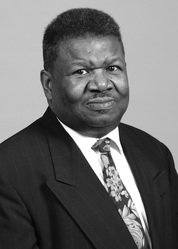 Willie Shellman joined Tuskegee Airmen, Inc. as a civilian in 1985 and currently serves as President of the New England Chapter. He graduated from high school in Chicago, IL. and later graduated from Tuskegee University with a degree in Electrical Engineering. Willie was employed as an Auto Pilot Design Engineer on C-5 and F-14 aircrafts and as an Avionics Design Engineer in missile systems. Mr. Shellman majored in Business Administration at Northeastern University and was employed as a Sales Operations manager in the computer and internet industries. Mr. Shellman most recent employment was as the Executive Director of the YMCA Achievers Programs at the YMCA of Greater Boston. Mr. Shellman is currently retired. Having lived in several cities around the United States, Willie and his wife Maxine, along with their daughter and son have resided in Sudbury Massachusetts for the past thirty-five years. Acknowledgements: Many dedicated Massachusetts Tuskegee Airmen have preceded us in their Homecoming. We dearly remember George S. Lima, Jr. (Rhode Island), William Bennett, Vernon Burke, Charles Diggs, James Fischer, Lloyd Godfrey, Daniel Grant, Stephen Hargrove, Milton Hopkins, Fuzzy Hector, Luther McIlwain, James McLaurin, Allen Monroe, Daniel Moore, Robert Newton Sr., John Roach, Frank Roberts, Thomas Ross, Willis Saunders, Herman Wells and many others. |
* * * * * * * *Archives
August 2023
|
©2024 All Rights Reserved Carole Copeland Thomas • (508) 947-5755 • Carole@mssconnect.com
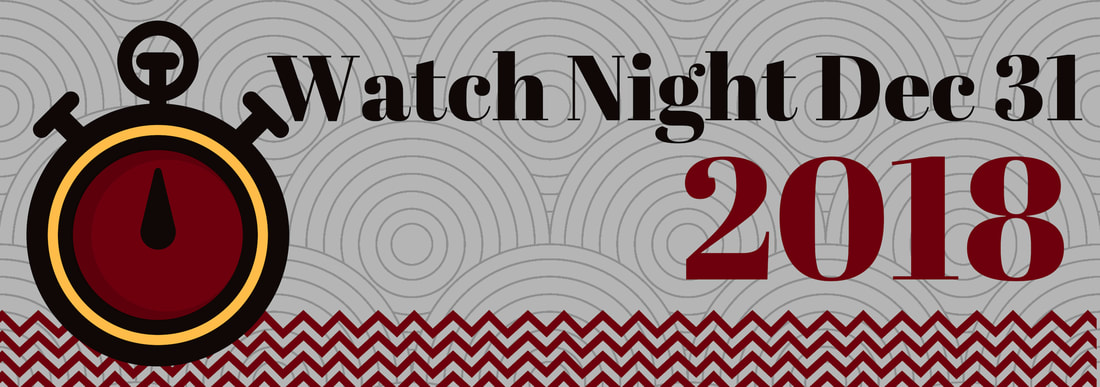
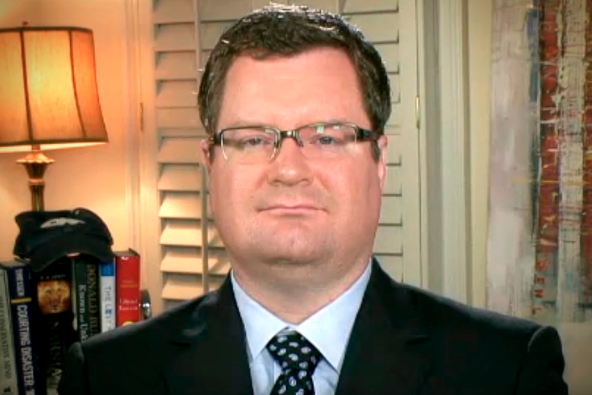
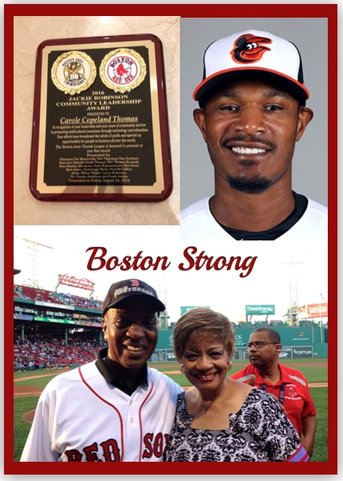
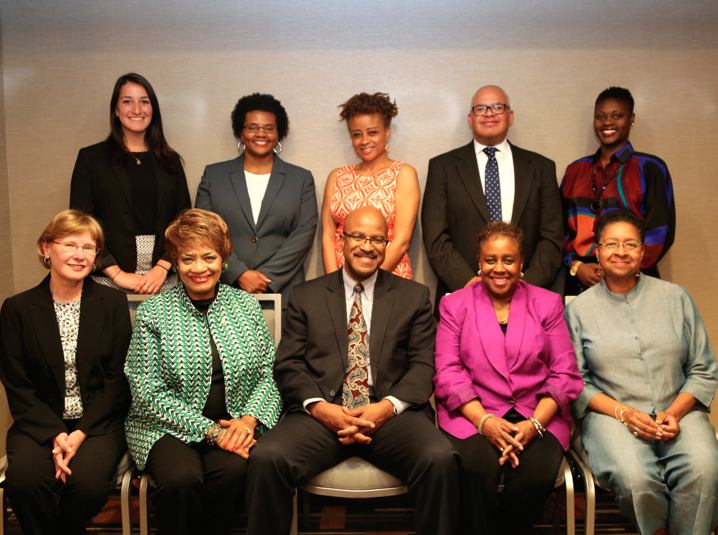

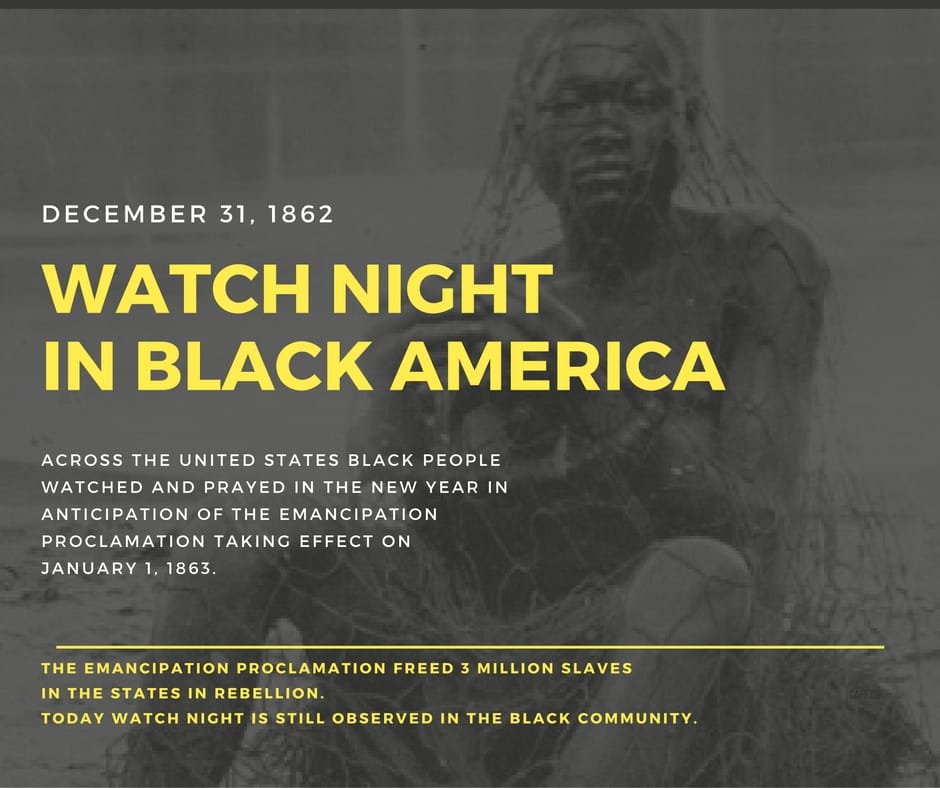
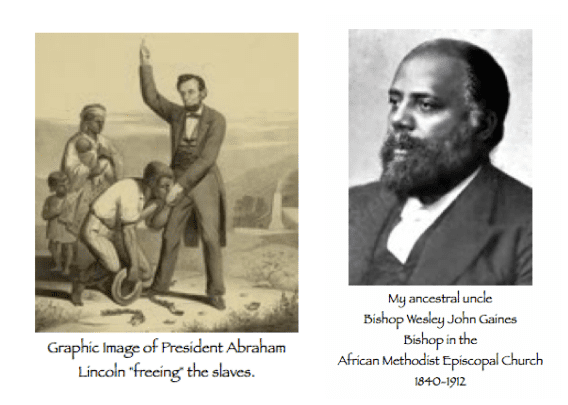
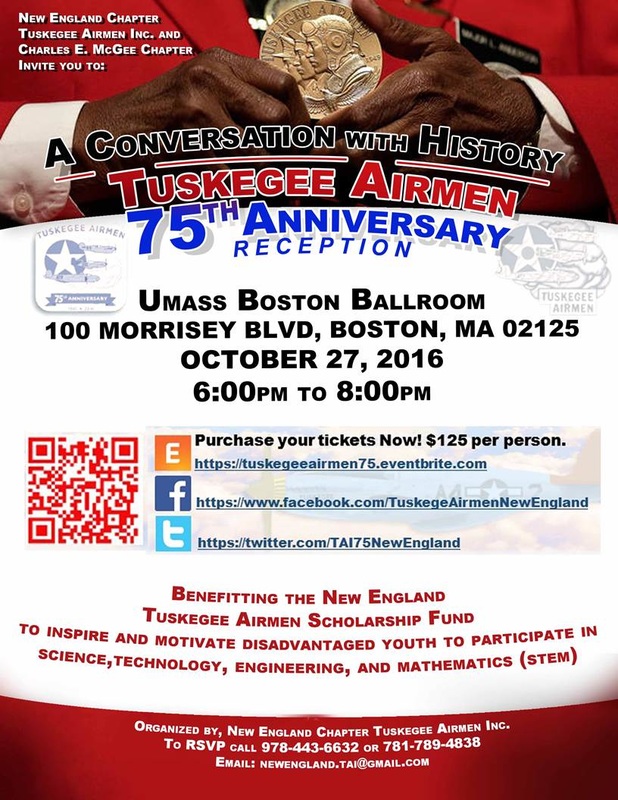
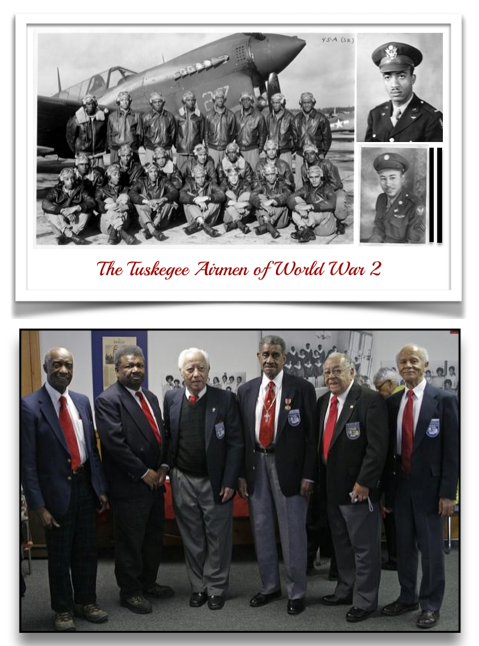
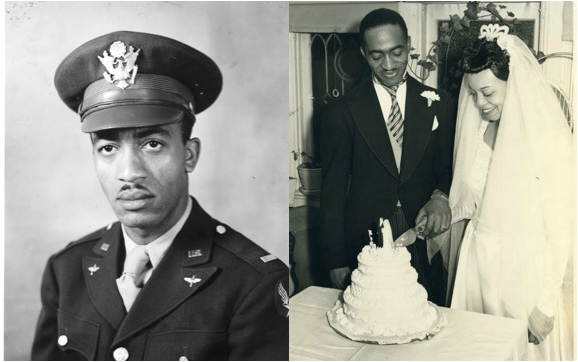
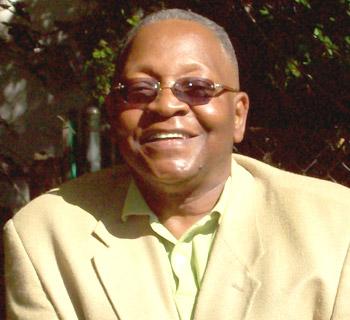
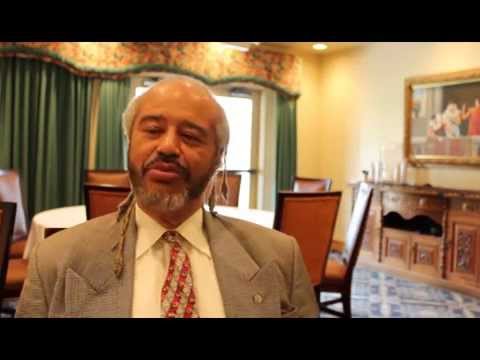
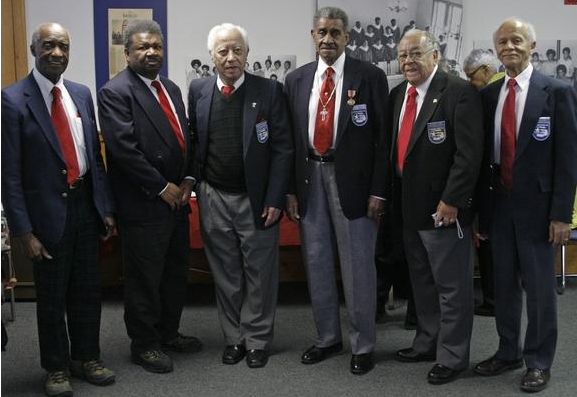
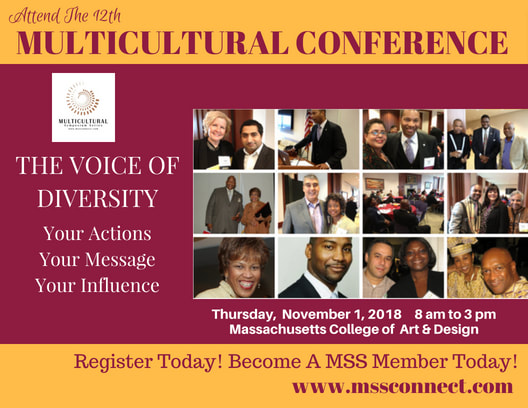
 RSS Feed
RSS Feed